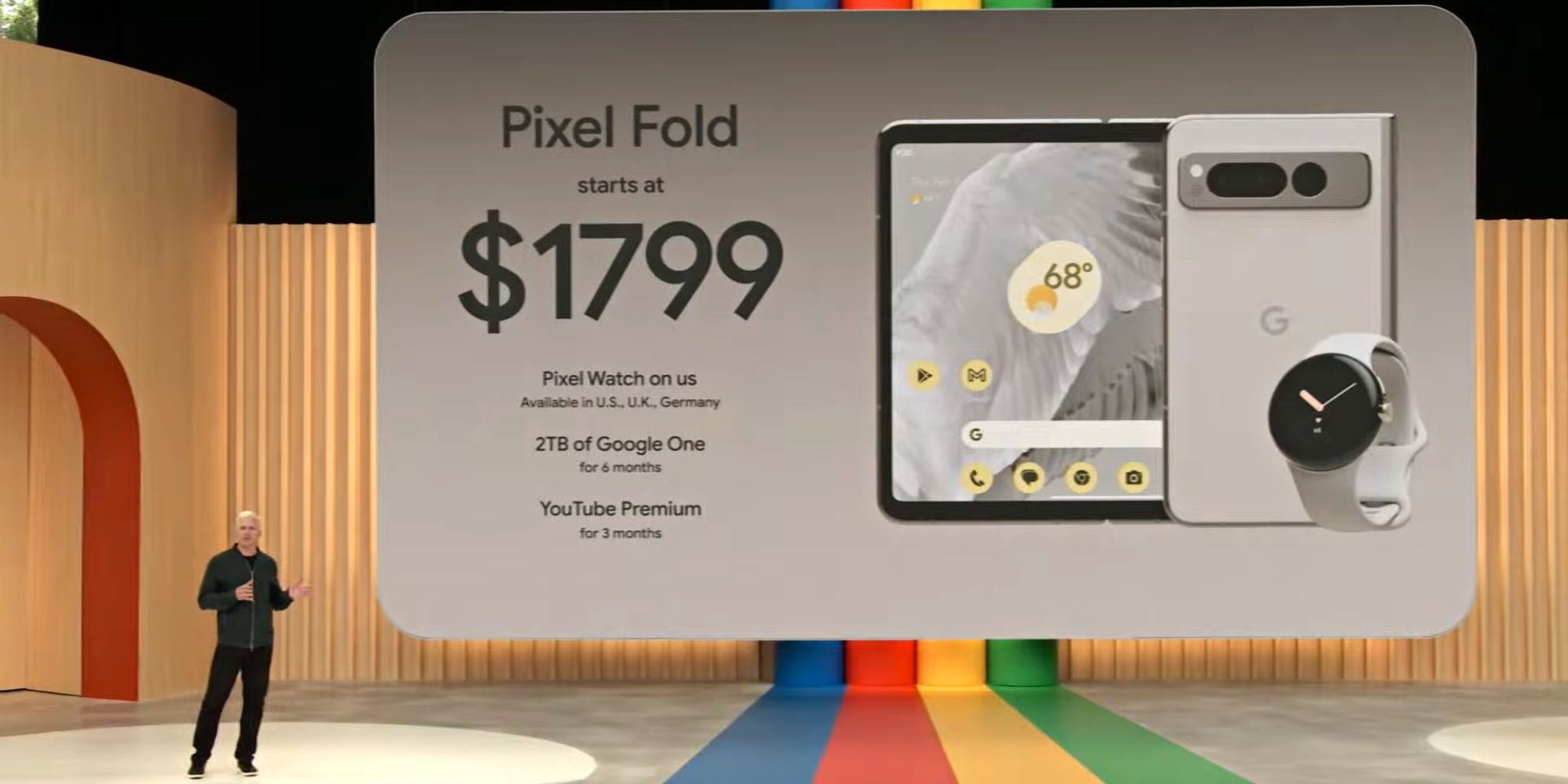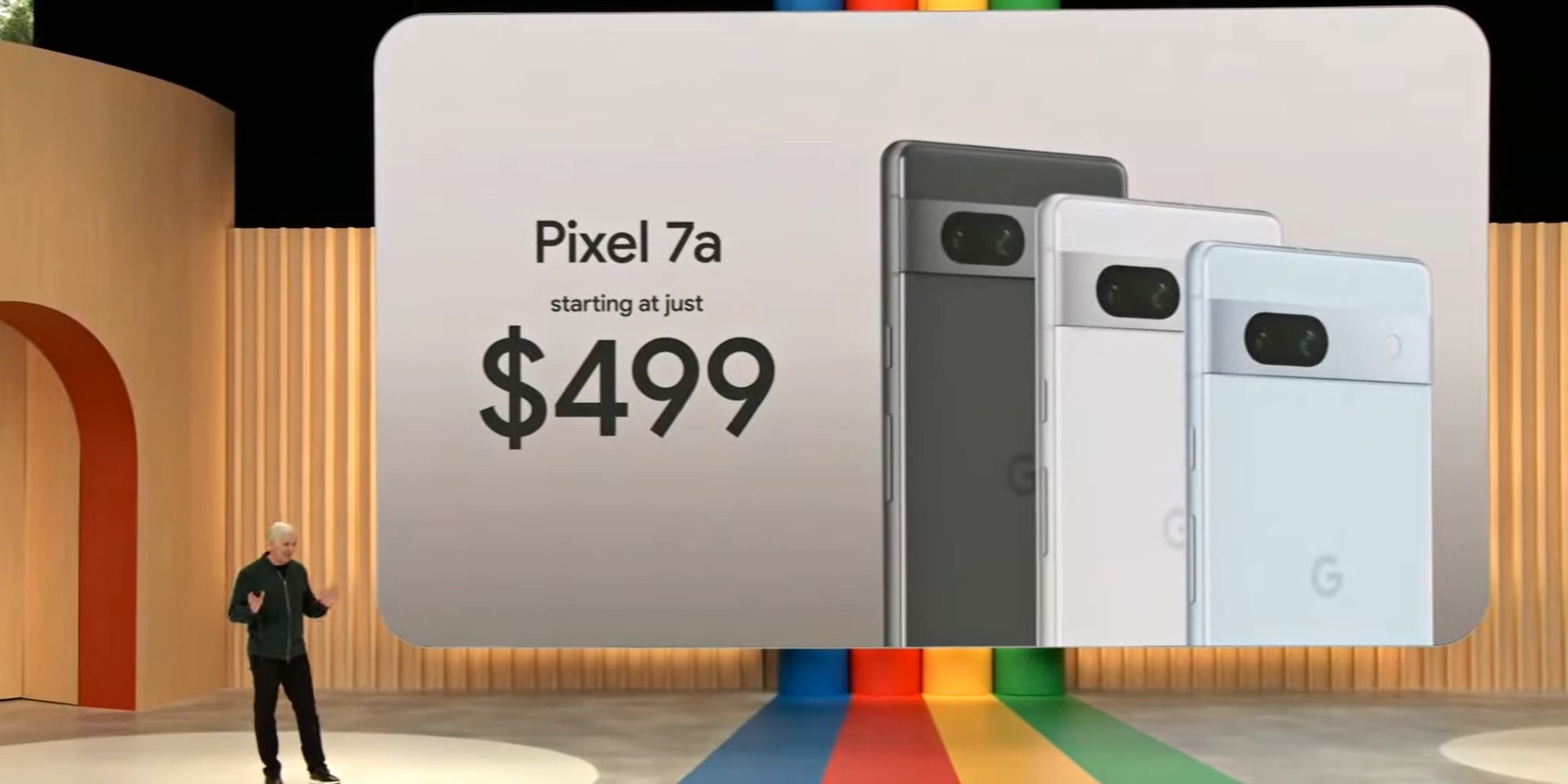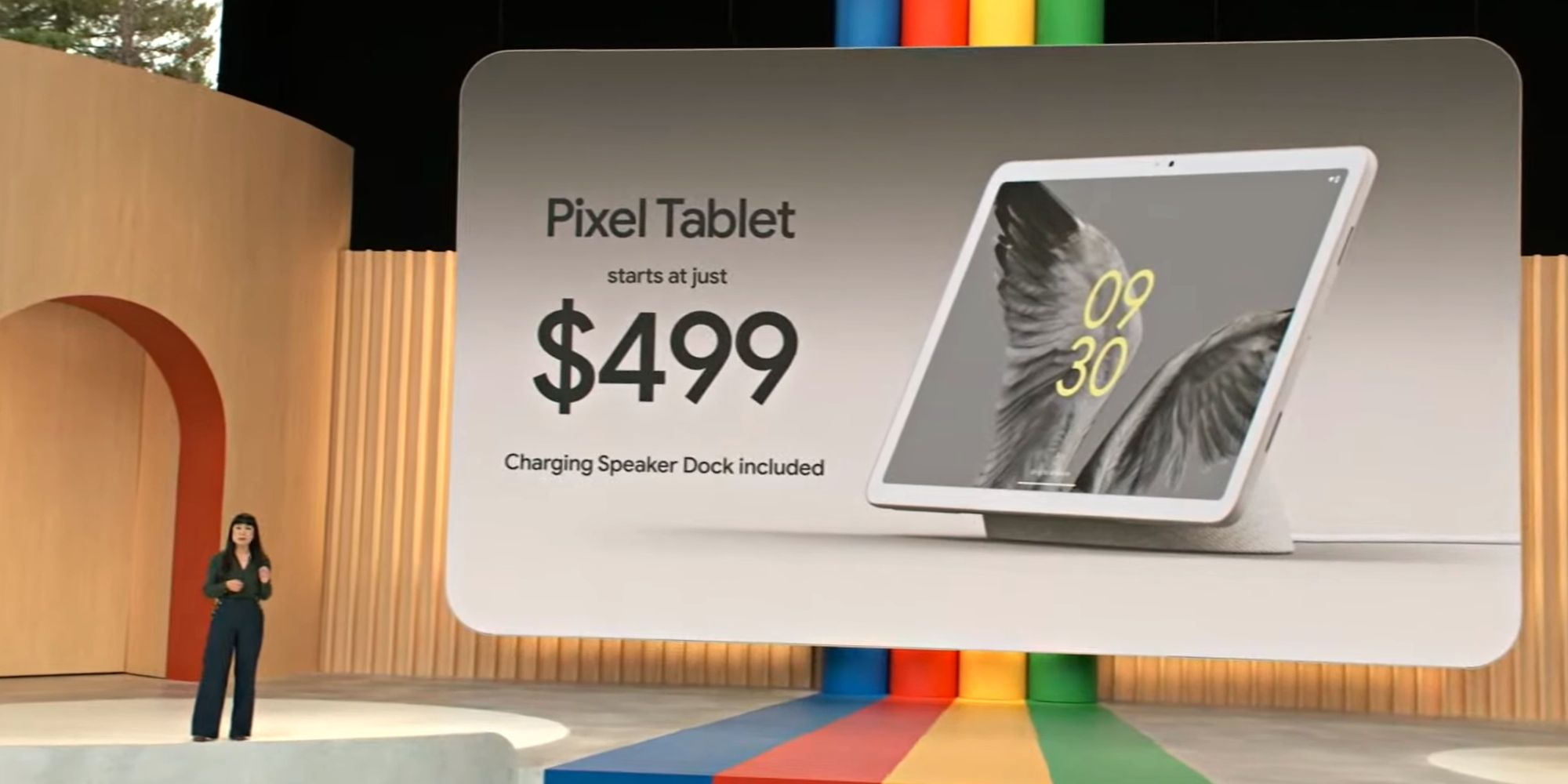After months of suspense, the California-based tech giant Google finally unveiled three new Pixel devices at its I/O 2023 developer conference: the much-awaited Pixel Fold, Pixel 7a, and the Pixel Tablet. Except for the Tablet, which was announced at I/O 2022, the devices have been the subject of leaks and rumors with no official confirmation until right before the event. The company unveiled the first look at the Pixel Fold on May 4 in a tweet.
The $499 Google Pixel 7a succeeds the Pixel 6a released in 2022, and it comes with a host of upgrades over the previous generation. On the other hand, the $1,799 Pixel Fold marks the company’s foray into the rapidly growing foldable phone market. Then there’s the $499 Pixel Tablet, the company’s first tablet that doubles as a hub for users’ smart home devices. Before revealing the latest in Google hardware, though, the company spent over an hour and a half detailing its recent efforts in AI, including the wait-free release of Bard and new AI tools for Search, Maps, Photos, and Workspace. Here’s everything Google announced at its annual developers’ conference in Mountain View, California.
Google’s Integrating AI Into Most Of Its Products
To kick off the Google I/O 2023, CEO Sundar Pichai announced several AI-related features that will make their way to users soon. To begin with, Gmail’s Help Me Write will help users generate entire emails based on short prompts. Then there’s Immersive View for routes, a Google Maps feature that’ll allow users to visualize their entire journey from one destination to another. Combining several Street View images, Immersive View will give users an aerial view of the route, with live weather updates.
Magic Editor is another generative AI-based feature coming to Google Photos. In a nutshell, it’ll take Magic Eraser, a feature that removes unnecessary details from pictures, to an entirely different level, where users can create new elements that were never a part of the original picture. Along with these features, Google removed the waitlist for its advanced language processing tool, Bard, making it available to users in over 180 countries and territories. Google has also added a Dark Theme. In the coming months, Bard will be able to generate images with the help of Adobe Firefly, become more visual in its responses, and borrow the capabilities of Google Lens.
Pixel Fold – Google’s Promising Foldable
The Google Pixel Fold is the most anticipated device of the lot. It manages to achieve a distinct appearance that separates it from the other foldables in the market while retaining the iconic design language of the Pixel family. The phone has a custom dual-axis hinge with fluid friction tech, and Google claims it is the most durable hinge on a foldable yet. The Pixel Fold’s 5.8-inch cover display and the 7.6-inch folding display support up to 120Hz refresh rate.
The foldable ships with a triple rear-facing camera setup, which includes a 48MP (f/1.7) primary sensor, a 10.8MP (f/3.05) telephoto sensor for up to five times optical zoom, and a 10.8MP (f/2.2) ultrawide sensor. Since it runs on Tensor G2, the phone supports all the Pixel smart camera features, including Magic Eraser, Photo Unblur, and Portrait Light. Users also get a 24-hour battery, a side-mounted fingerprint scanner, 12GB of LPDDR5 RAM, and up to five years of security updates.
The Pixel Fold is available to pre-order on the Google Store, and the company will start shipping units next month. It costs a whopping $1,799 for the 256GB storage variant, but to soften the blow, Google bundles in a free Pixel Watch to buyers who book the device in advance. There are two colors to choose from: Porcelain and Obsidian.
The Pixel 7a Gets A 90Hz Display And Tensor G2 Chipset
Even though the Pixel 6a was a great budget phone, it lacked in certain aspects, without a high refresh rate screen or a powerful, flagship-grade chipset. However, that changes with the Pixel 7a. For starters, the phone comes with a 6.1-inch FHD+ OLED screen that supports up to 90Hz refresh rate. Under the hood, the device gets its most significant upgrade, the Tensor G2 chipset — the same chipset that powers the more expensive Pixel 7 lineup.
The phone also comes with improved cameras, including a new 64MP (f/1.89) primary sensor that unlocks Super Res Zoom up to 8x, a 13MP (f/2.2) ultrawide sensor with autofocus, and a new 13MP (f/2.2) selfie-shooter with a 95-degree field of view. Although other aspects like battery life, charging time, biometric security, water resistance, and design remain similar, the Pixel 7a qualifies as a significant upgrade.
The phone comes in four colors: Charcoal, Snow, Sea, and Coral. Google sells it in a single storage variant (8/128GB) for $499. Those who get it from Google Store will get a free Pixel Buds A-Series and a limited edition phone case. Interestingly, the smartphone is available at the same price in India, i.e., Rs. 39,999 (including an offer). The company offers up to five years of security updates with its latest budget phone.
Pixel Tablet Makes Its Debut With A 10.95-inch LCD
The Pixel Tablet arrives with a 10.95-inch LCD display that can achieve a peak brightness of 500 nits and supports USI 2.0 stylus pens. Like the Pixel 7a and Pixel Fold, the Tablet also runs on Google’s Tensor G2 chipset, along with 8GB of LPDDR5 RAM and up to 256GB of UFS 3.1 storage. Since the device will operate on stock Android, users will get easy privacy controls like the camera and mic toggles.
It features the same 8MP (f/2.0) camera on the front and the back, which supports 1080p video at 30 fps. What’s unique about the Pixel Tablet is that users can connect it to a charging dock that doubles as a speaker via magnetic pogo pin connections, making it look and function much like a Nest Hub. Once docked, the device can be used as a hub to control other smart devices in a household. Google has also announced up to five years of security updates for the Pixel Tablet.
The Google Pixel Tablet is available to purchase at $499 for the 128GB storage model, and it comes bundled with the Charging Speaker Dock. Buyers can choose from three colors: Porcelain, Rose, and Hazel.
This story originally appeared on Screenrant




